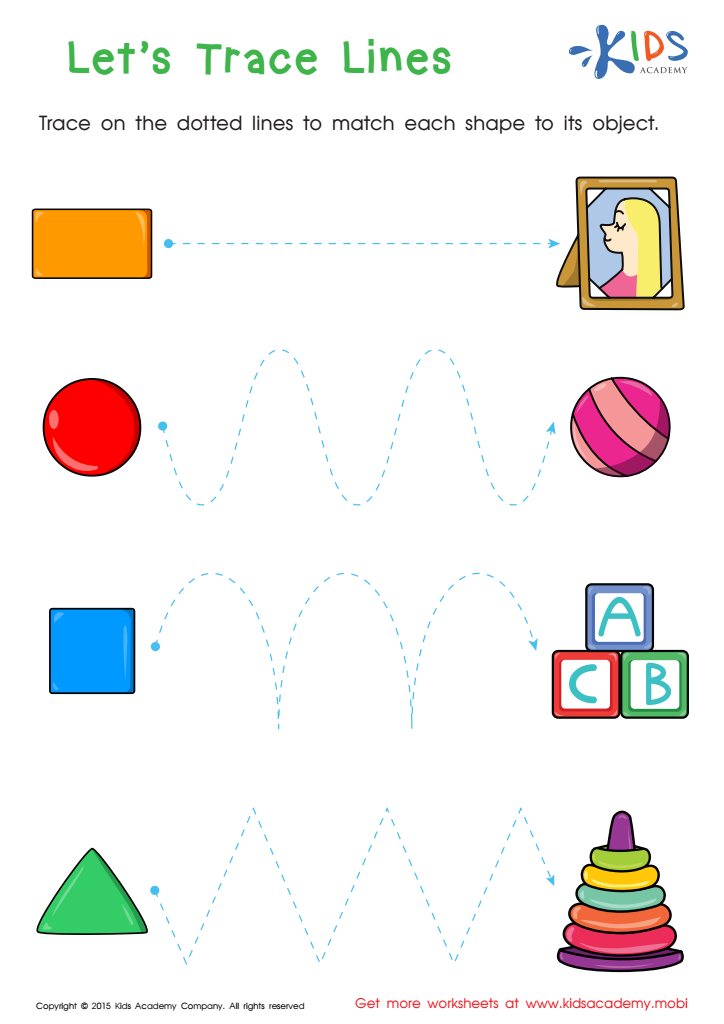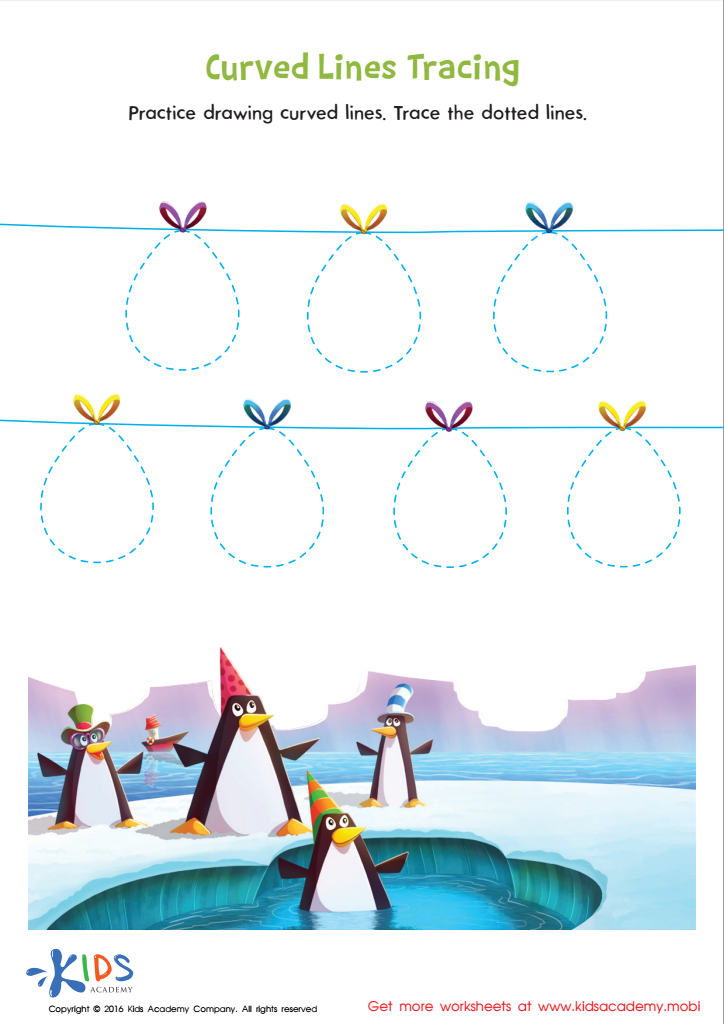Shape Recognition Tracing Lines and Curves Worksheets for Ages 5-7
3 filtered results
-
From - To
Discover our engaging "Shape Recognition Tracing Lines and Curves Worksheets" designed for children aged 5-7! These fun-filled activities help young learners develop essential shape recognition skills while improving their fine motor abilities. Each worksheet features colorful illustrations that guide students in tracing lines and curves, reinforcing their understanding of basic shapes. Perfect for preschoolers and early elementary students, these worksheets foster excitement in learning through play. Parents and teachers can easily print them for classroom or home use, ensuring a productive and creative learning experience. Unlock your child's potential in geometry and spatial awareness with our expertly crafted tracing worksheets!


Find the Curved Lines! Worksheet


First Words: Let's Trace Lines Worksheet


Curved Lines Tracing Worksheet
Shape recognition and tracing lines and curves play a crucial role in early childhood education for children aged 5-7. At this developmental stage, children are actively exploring their environments and refining their motor skills. Encouraging them to recognize shapes and trace allows them to develop essential visual-spatial skills which are foundational for later learning in mathematics and reading.
Shape recognition fosters cognitive skills by helping children identify and categorize different objects in their world. It enhances their understanding of geometry and builds a bridge to more complex mathematical reasoning. Conversely, tracing lines and curves promotes fine motor skills, which are vital for handwriting and overall dexterity.
Ignoring this essential aspect of learning may hinder a child's potential and confidence in both academic and everyday situations. Engaging in such activities enriches children’s ability to express themselves creatively, as they can better design, draw, or construct objects. Moreover, these fundamental skills encourage problem-solving and critical thinking, which are essential life skills. Thus, parents and teachers should prioritize shape recognition and tracing activities to support holistic development in young learners. Investing in these skills now sets children up for a successful academic journey and lifelong learning.
 Assign to My Students
Assign to My Students

















